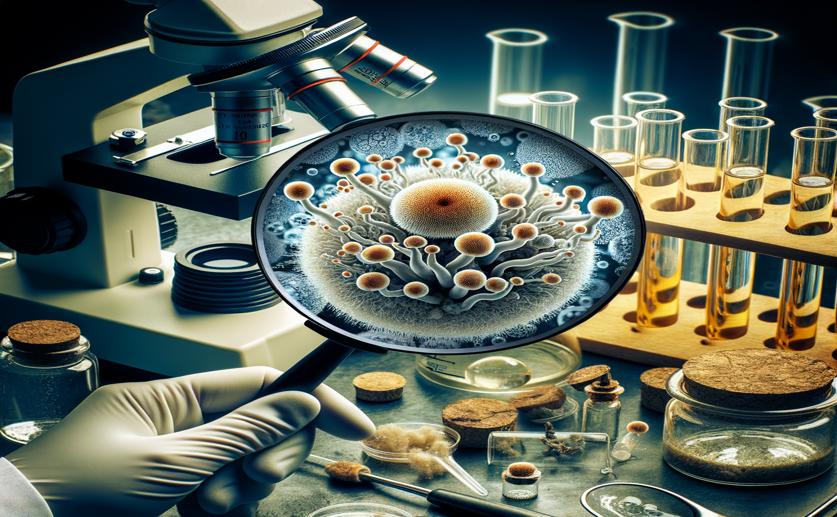
Creating Kojic Acid with Fungus for Antibacterial and Cancer Fight
Jim Crocker
26th April, 2024

Image Source: Natural Science News, 2024
Key Findings
- Researchers at Assiut University increased kojic acid production to 81.59 g/L, doubling previous amounts
- Kojic acid showed strong antibacterial activity against several human pathogens
- The compound also demonstrated significant anticancer effects, particularly against liver cancer cells
References
Main Study
1) Production of kojic acid by Aspergillus flavus OL314748 using box-Behnken statistical design and its antibacterial and anticancer applications using molecular docking technique.
Published 25th April, 2024
https://doi.org/10.1186/s12866-024-03289-2
Related Studies
2) Kojic acid applications in cosmetic and pharmaceutical preparations.
3) Loss of msnA, a putative stress regulatory gene, in Aspergillus parasiticus and Aspergillus flavus increased production of conidia, aflatoxins and kojic acid.
4) Identification and characterization of genes responsible for biosynthesis of kojic acid, an industrially important compound from Aspergillus oryzae.
5) Downregulation of NF-kappaB activation in human keratinocytes by melanogenic inhibitors.
Journal: Journal of dermatological science, Issue: Vol 31, Issue 3, May 2003



 15th March, 2024 | Greg Howard
15th March, 2024 | Greg Howard